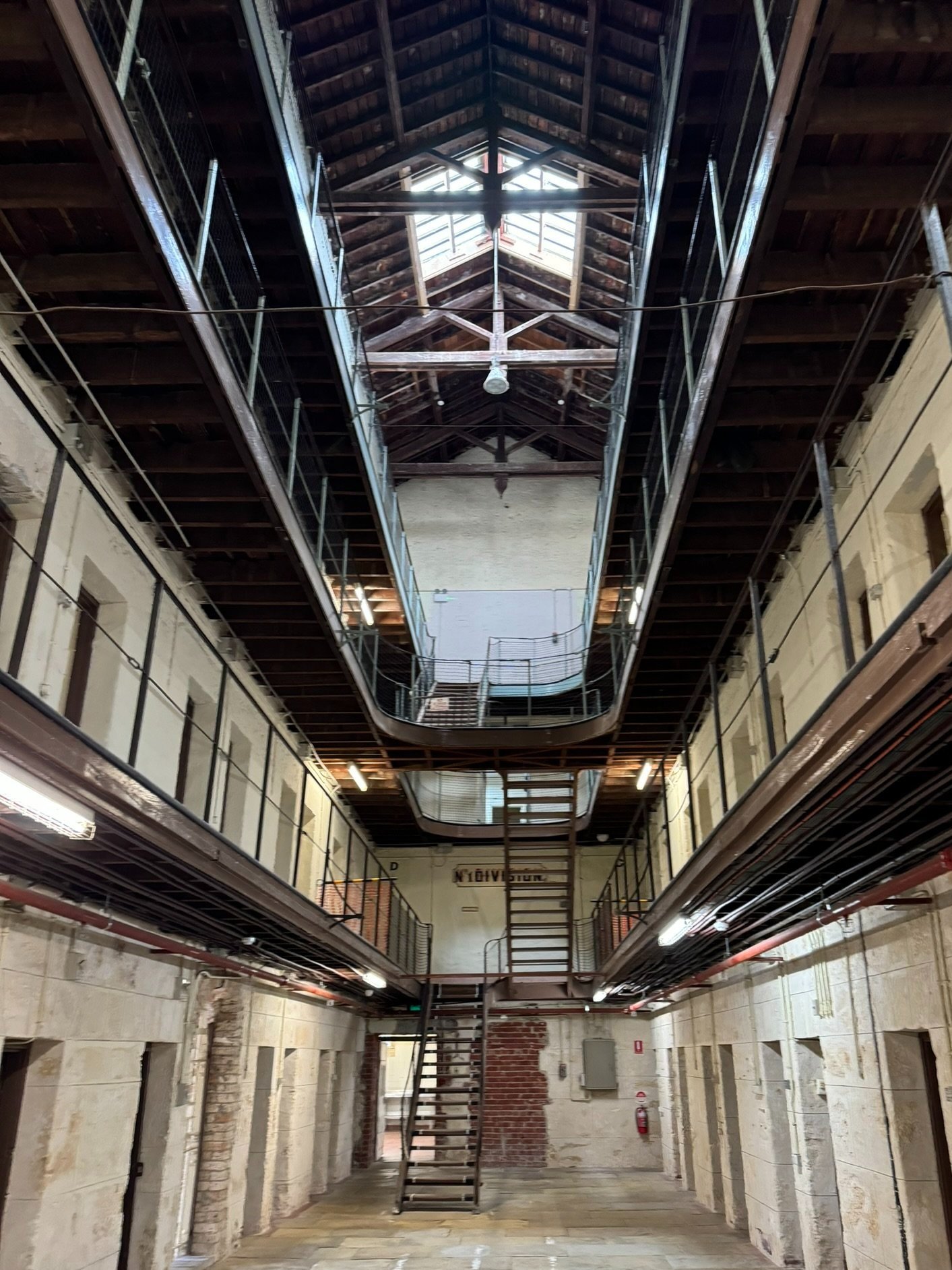Freemantle & Western Australia
Freemantle, a suburb of Perth, is now a modern somewhat hip suburb and port city with lots of coffee shops, great restaurants and a very large historic prison museum. The prison museum is a look into its history and how it became a British, rather than Dutch, territory.
The Freemantle Prison was built by prisoners sent from England by the British in an effort to populate the area and claim it for the British. At the time, Dutch explorers were in the area looking for new territory to colonize. Unlike other areas of Australia, Australian settlers wrote to the British government requesting prisoners to be sent. They didn’t want the murders and other people who committed serious crimes, only those who’s primary crime was poverty – those who stole to survive or committed other poverty-related crimes. The British instead sent criminals with a variety of different records. The prisoners who arrived faced a stark life. They built the prison next to the limestone quarry they mined for the prison walls. They use local wood to make the rafters and beams. And metal fixtures were recycled from derelict boats. It was a hard life
Prisoners were subject to corporal punishment – lashings by whip – and capital punishment by hanging. The different guided tours (the prison is only open via guided tours) show different parts of the facility. The cells and cell art, the chapel, the yards, the kitchen and gallows are all shown. I did three different tours when I visited over two days. Two of the tours were above ground in the main prison areas. The infirmary and women’s ward are now a hostel for backpackers. I also found it odd that the whips sold in the gift shop would have been more fitting in an adult store than a prison museum.
One of the most incredible tours was in boats under the facility. To get enough fresh water for the prisoners and, for a short period, the town of Fremantle, the prisoners tunneled into an underground aquifer. These tunnels have since partially flooded with shallow, clear water. The tunnels are accessed via a vertical shaft. Guests are harnessed up for the 20 meter or so (60 ft) climb down the vertical ladders of one of the shafts. No phones are allowed, pockets must be entirely empty and rubber boots (provided) must be worn. Hardhats and headlamps are also provided when putting on harnesses and must be worn in the tunnels. In addition, a breathalyzer is required. The tunnels are not for the claustrophobic or those with a fear of heights. The tunnels with wood shoring show an underground workplace, where a maze of infrastructure was built to service life on the surface.
Prisoners lived a hard life, with backbreaking work and appalling living conditions. Inmates were given two buckets for their cells, one for water and another for waste. There was no running water in the cells. Incredibly, the prison operated until the early 1990s.
A Freemantle Prison cell block.
Inside one of the smaller cells.

